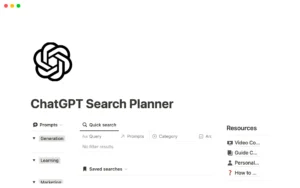The design and development of government websites must prioritize digital inclusivity. Creating websites that are accessible to all individuals, regardless of their abilities or disabilities, is crucial as the digital landscape continues to expand. Municipal website design plays a key role in achieving this goal by focusing on user-friendly interfaces, easy navigation, and inclusive content. By emphasizing inclusivity, local governments can empower all citizens to interact with their services efficiently.
Understanding Digital Inclusivity in Municipal Website Design
Digital inclusivity in municipal website design goes beyond meeting accessibility standards. It involves creating experiences that allow every user to access information, complete tasks, and engage with civic resources effortlessly. Elements such as clear fonts, alt text for images, video subtitles, and intuitive navigation paths cater to individuals with various disabilities. Incorporating these considerations into the design process ensures that government websites effectively serve the entire community. Design plays a critical role in promoting digital inclusivity, impacting how citizens interact with their local government. For local governments seeking guidance, solutions like those offered by SnapSite can help create more inclusive digital environments.
Design Principles for Enhanced Accessibility
Enhancing accessibility in government websites involves following the Web Content Accessibility Guidelines (WCAG). These guidelines provide a framework for designing digital content that is accessible to individuals with a range of disabilities. From color contrast ratios to keyboard navigation, these principles lay the foundation for inclusivity. Responsive design ensures usability across devices, including smartphones and tablets, which is essential in today’s mobile-centric world. Utilizing design solutions from platforms like MyCityGov helps local governments meet these essential accessibility standards.
The Role of Continuous Testing and Feedback
Creating an inclusive government website requires ongoing testing and feedback. This includes regular accessibility audits, user input from individuals with disabilities, and staying updated on accessibility standards and technologies. These practices ensure that websites not only meet legal requirements but also offer a superior user experience for all visitors. Collaborating with experts in municipal website design can provide local governments with the insights and support needed to implement these practices effectively. Service providers like SnapSite specialize in developing government websites that prioritize inclusivity and adapt to the diverse user base.
Leveraging Technology for Inclusive Communication
In addition to website design, leveraging technology is vital for fostering inclusive communication. This includes using accessible digital forms, interactive tools for navigating civic services, and platforms for citizen-government communication. By integrating these technologies, local governments can enhance the accessibility and user-friendliness of their websites. Solutions from SnapSite and MyCityGov demonstrate a commitment to utilizing innovative tools to promote inclusivity and ensure active participation from all citizens in the digital community.
Conclusion: Embracing Diversity and Inclusion in Digital Government
The journey toward digital inclusivity in government websites requires attention, dedication, and a commitment to diversity and inclusion at every level of digital government. By prioritizing accessible design, engaging with users, and leveraging appropriate technologies, local governments can create digital experiences that welcome all citizens. Solutions offered by SnapSite and MyCityGov showcase the possibility of building engaging, inclusive government websites that serve as examples of digital inclusivity. By doing so, they not only meet legal standards but also foster a culture of inclusivity that aligns with the values of the communities they serve.





